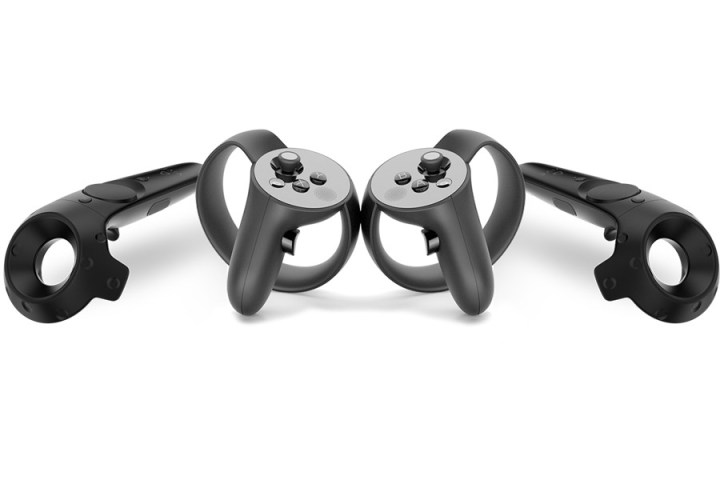
That’s somewhat surprising, as the design of the two control systems has seen much debate over the past few months. While HTC’s Vive headset makes use of what could be termed ‘wand’ controllers, with their large handles and extended ‘donut’ sensor ring, Oculus’ Touch system is much more centered around the hand itself.
They resemble a traditional gamepad cut in half and attached to a half moon stand. Practically, though, it sounds like that doesn’t make a huge difference to the experience.
This is especially telling, because it isn’t coming from the mouth of a tester, but that of Fantastic Contraption developer, Andy Moore.
“The hardware is almost identical. The software and APIs [application program interface] are almost identical. The specs are almost identical,” Moore said in a chat with Polygon. “The Vive can do seated and standing, and the Vive you can mount both your lighthouses on one wall. And on the Oculus you can move one of the cameras to the back corner and get room scale.”
When Oculus debuts its Touch controllers at some point in the second half of 2016, it will ship them with an additional constellation camera to aid tracking. Some have also shown that near-roomscale can be achieved with the Rift using just a single well-placed camera.
When all is released, said and done by the end of this year though, there will still be a difference: the Vive will have its chaperone system and the Rift will not. This is how the Vive alerts users that they’re about to run into something they can’t see.
It’s good to know that the Rift is almost as room-scale capable, and that its controllers are as good as the Vive’s. We’d just like to see some more safety focused tweaks from Oculus to enable comfortable room-scale tracking, without fear of damaging your expensive hardware.



